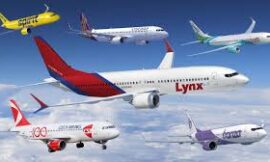British Airways (BA), Britain’s national flag carrier, remains a market leader in aviation. In a quest to preserve competitive edge, BA is constantly modifying its marketing strategies to suit shifting market conditions. A close examination of British Airways’ marketing strategy provides insight into its external context, competitive standing, and strategy.
British Airways Pestle Analysis: External Influence Understanding
BA works in a very regulated business with several outside factors influencing it:
Government regulations on security and trade unions impact BA operations. Safety regulations have to be followed strictly, while industrial disputes may lead to disruptions to services.
Economic factors such as changes in exchange rates, inflation, and economic slowdowns affect air passenger spending. Passenger volumes and revenues fall in times of recession.
Social factors such as demographics that include population ageing impact demand for travel. Older travellers might take alternative modes of transportation, lowering demand on some routes.
Technology: Online booking systems and in-flight Wi-Fi increase customer satisfaction, but price comparator websites increase competition by making prices more transparent.
Environmental: Increased emission and noise pollution regulations push BA to invest in more efficient aircraft and green initiatives.
Legal adherence to aviation regulations and labour legislation is vital. Legal matters like mergers and labour disputes pose threats to operations.
Porter’s Five Forces: Examining Competitive Pressures
BA’s market position can be analyzed through Porter’s Five Forces model:
Threat of New Entrants: It is low because of high entry barriers in terms of capital requirements and regulations.
Threat of Substitutes: Low on long-haul flights but substitutes like trains compete with short-haul routes.
Buyers’ bargaining power: Buyers possess high bargaining power due to a number of options among airlines and price consciousness.
Supplier bargaining power: The aircraft producers and fuel suppliers have pricing and availability control that impacts BA’s cost.
Industry Competition: Intensive competition necessitates that BA differentiates on price, quality of service, and customer loyalty schemes.
SWOT Analysis: Internal Strengths and Weaknesses
British Airways SWOT analysis highlights BA’s position in the industry:
Strengths: Strong brand image, extensive global network, and quality customer care fuel loyalty.
Weaknesses: Operation and customer service inefficiencies must be constantly enhanced.
Opportunities: Emerging markets and technological advances offer opportunities for expansion and efficiency.
Threats to it include economic uncertainty, geopolitical risks, and low-cost carrier competition.
Marketing strategies must adapt to market changes.
Loyalty Program
Evolution BA reconfigured its Executive Club frequent flyer program to pay more attention to high-spending passengers rather than frequent flyers. This was unpopular with passengers and resulted in revisions to balance reward with spending as well as the frequency of flying.
Upgrade to Premium
Realising that premium cabins were lucrative, BA invested in luxury upgrades such as state-of-the-art first-class cabins on Airbus A380s to target high-spending travellers.
Brand positioning
BA’s “A British Original” campaign reinforces its emphasis on British culture and personal stories to build emotional connections with passengers.
Conclusion
Mapping the Future of British Airways BA’s strategy reflects its commitment to adapt to changes in the industry while maintaining brand loyalty. By conducting thorough market research and thoughtful initiatives, the company is well-set to be successful in the long term. By putting customer experience at the forefront, brand image, and being environmentally friendly, BA remains competitive in a changing aviation sector.



